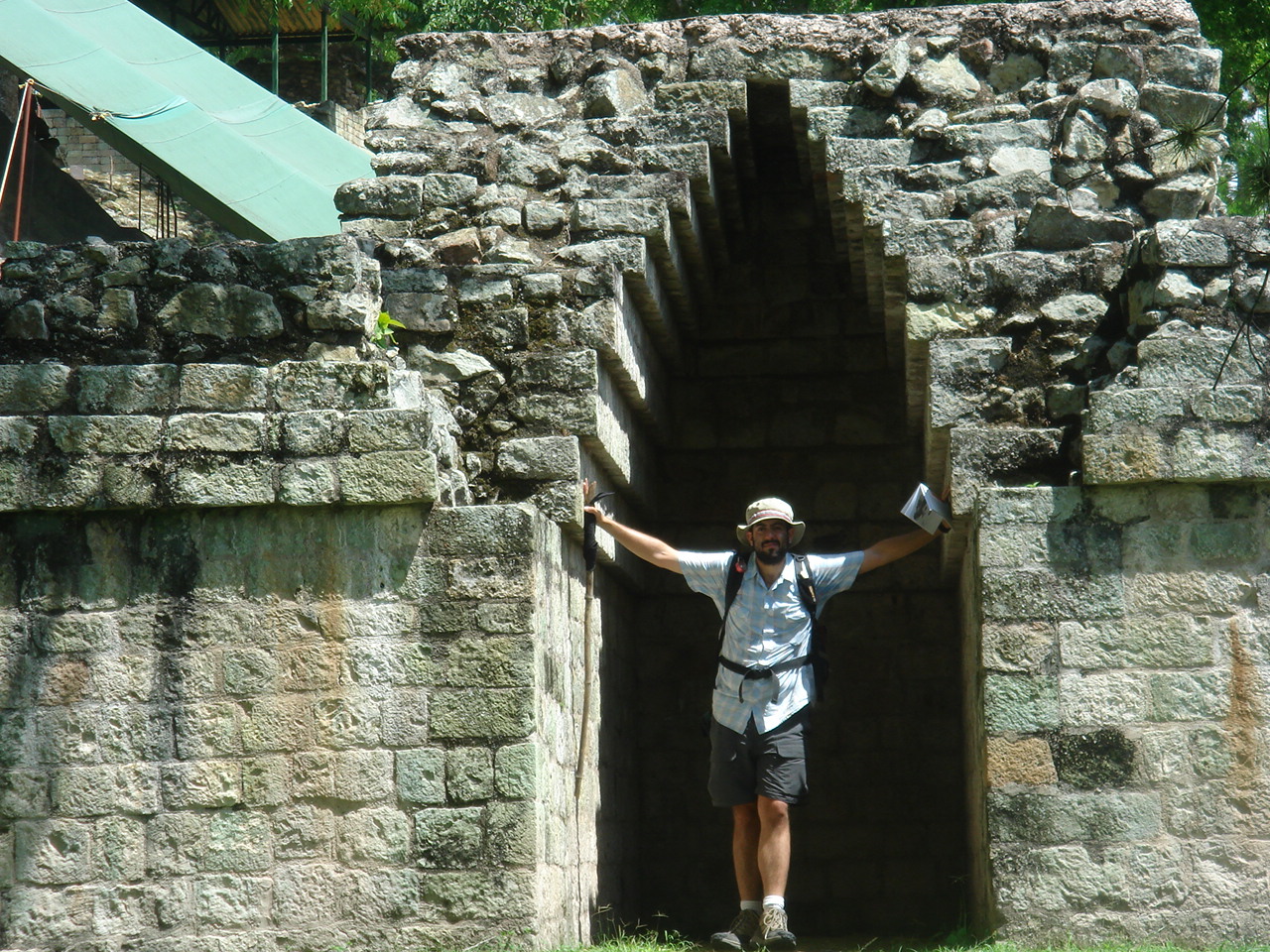Honduras
Currency: Limpira/Limpiras (L) [L18=US$1]
Sunday, June 17, 2007 (bus through Honduras)
...We got to El Poy a little after 11, and it was a short walk to the one building that did border crossing for both sides. The place was dead, probably because it was a Sunday morning. We filled out the form, walked on a bit, showed our passports again, changed a little money, then crossed completely into Honduras. Another short walk brought us to the colectivo taxis and there was some confusion since the immigration official said there were direct buses from here (I'm not surprised she was wrong). So we took the taxis (fairly cheap), then were dropped off right as the bus we wanted from Nuevo Ocotepeque to La Entrada (onward to San Pedro Sula) was preparing to depart. This was a little
|
 |
| chaotic as we rushed to get tickets and board....I expect we'll hit La Entrada a little after 3pm. |
The ride has been interesting. We've been winding over and through some high, deep, lush mountains in Western Honduras. I knew the terrain all along the Central American isthmus was mountainous, but I was still somehow unprepared for its beauty and grandeur.
Also, the flags of Nicaragua, El Salvador, and Honduras are similar: blue bar, white bar, blue bar, with a different crest in the middle.
Monday, June 18, 2007 (Copán Ruinas, Honduras)
...We arrived in Copán Ruinas last night after about 10 ½ hours of travel. But we did do it in a day. Awesome. We looked at a place that was $4/night for a dorm bed, but they had only one bed left, unfortunately. The guys ended up staying next door in a new hotel (open two days, I hear) with rooms for $20. That works for them, but was too steep for us. Another reminder of the trade-offs of size. We ended up two blocks away in a hotel with two-twin-bed rooms for $8....
We all met up for dinner last night at the Red Frog, an American-style upstairs restaurant. We left after dinner, rather than stick around for beer pong and possibly going back to their place to drink (good God, they love to drink!), because we were both not feeling well. When we got back it started, and it's hit C the hardest. She had mild diarrhea, then threw up. She slept fitfully and threw up again during the night. I slept through the night, a bit fitfully and in minor pain, but then the diarrhea started a little before 6. It happened two more times in the next 40 minutes, then I threw up as well returning to the room.
In retrospect, we're pretty sure it was food poisoning, brought about from the most likely culprit: a salad. Yes, seems odd, but it was the only that that both C and I had that none of the others partook of (all of us had meat and cheese, cooked thoroughly, and various alcoholic drinks and bottled water). It may not have been poorly washed produce; it may have been old salad dressing. We really don't know. Whatever the case, we're pretty sure it was food poisoning, plain and simple.
Though I felt much better, I had a feeling I wasn't totally out of the woods yet, so I took the first pill of my diarrhea-emergency antibiotic. It seem to be helping a lot. It's now mid-morning and I've only had a couple more bouts, both much smaller. I even walked into town twice, once to meet the guys and tell them we were too sick to go on a guided hike we'd planned (we plan to meet for lunch and hopefully be well enough to go to the ruins with them), and once to cancel the dorm for tonight (it seems better to stay here in a private room – under the circumstances) and get light food and medicine. I should also point out that when I told them we were both too sick, and we suspected food poisoning Phil said the problem was we didn't drink enough:
"If you'd drink as much as we do," he said, "it would kill off anything in your stomach and you'd be fine now."
"Perhaps," I responded, "but then we'd be sick from a different problem."
"No," he rebutted, "you build up a tolerance."
As I walked back this time, I feel [sic] much better, and I think I'll be fine to go this afternoon. I have hopes for C as well, since she is sleeping now and has said that though she feels a bit queasy, she feels much better.
| Copán is a really nice town. Narrow, cobblestone streets, friendly people, good vibe, and it feels amazingly safe. Plus, it's surrounded by gorgeous mountains. I could enjoy staying here a while and though we're in no rush to leave, I doubt we'll be here past tomorrow. |
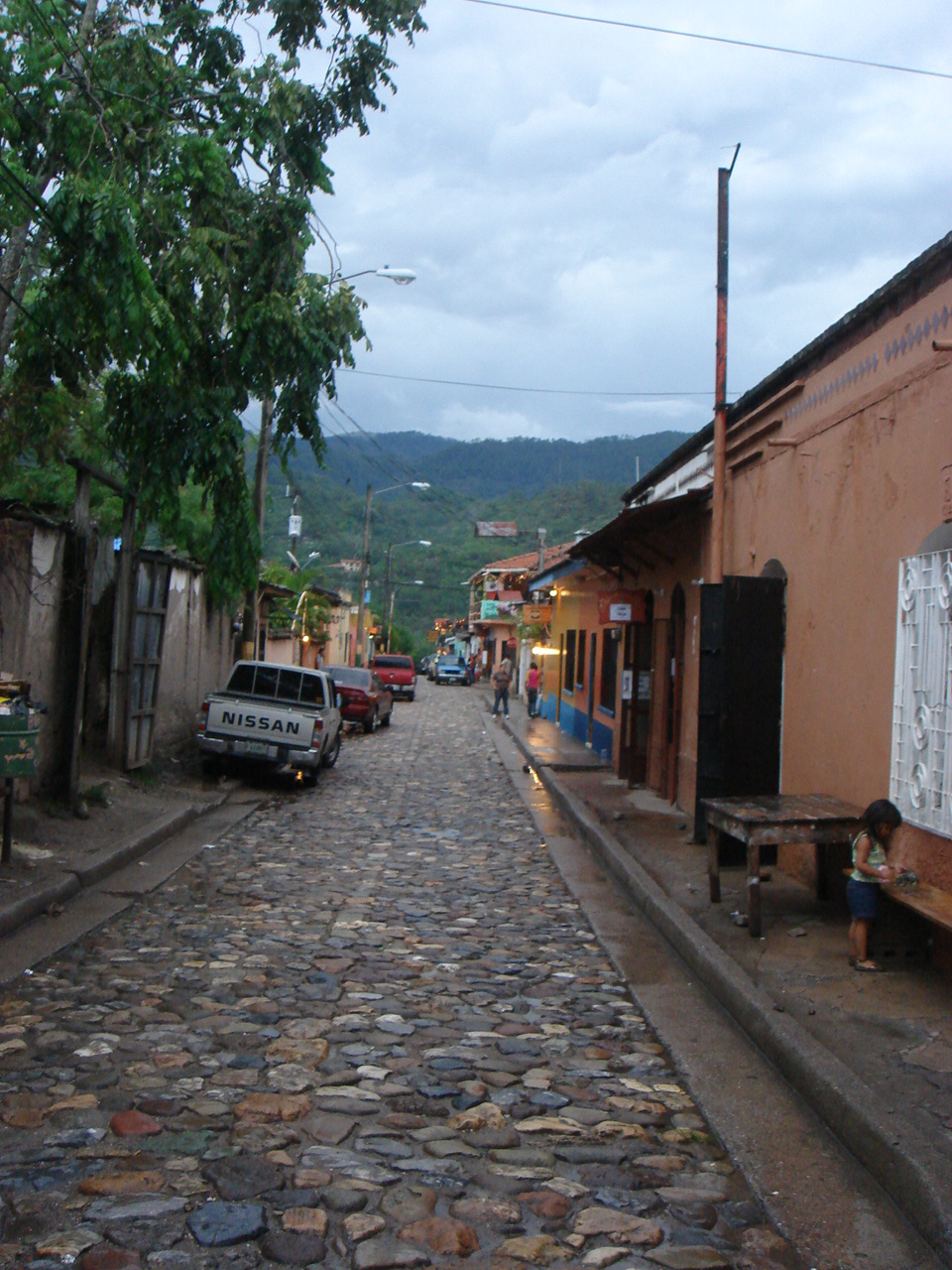 |
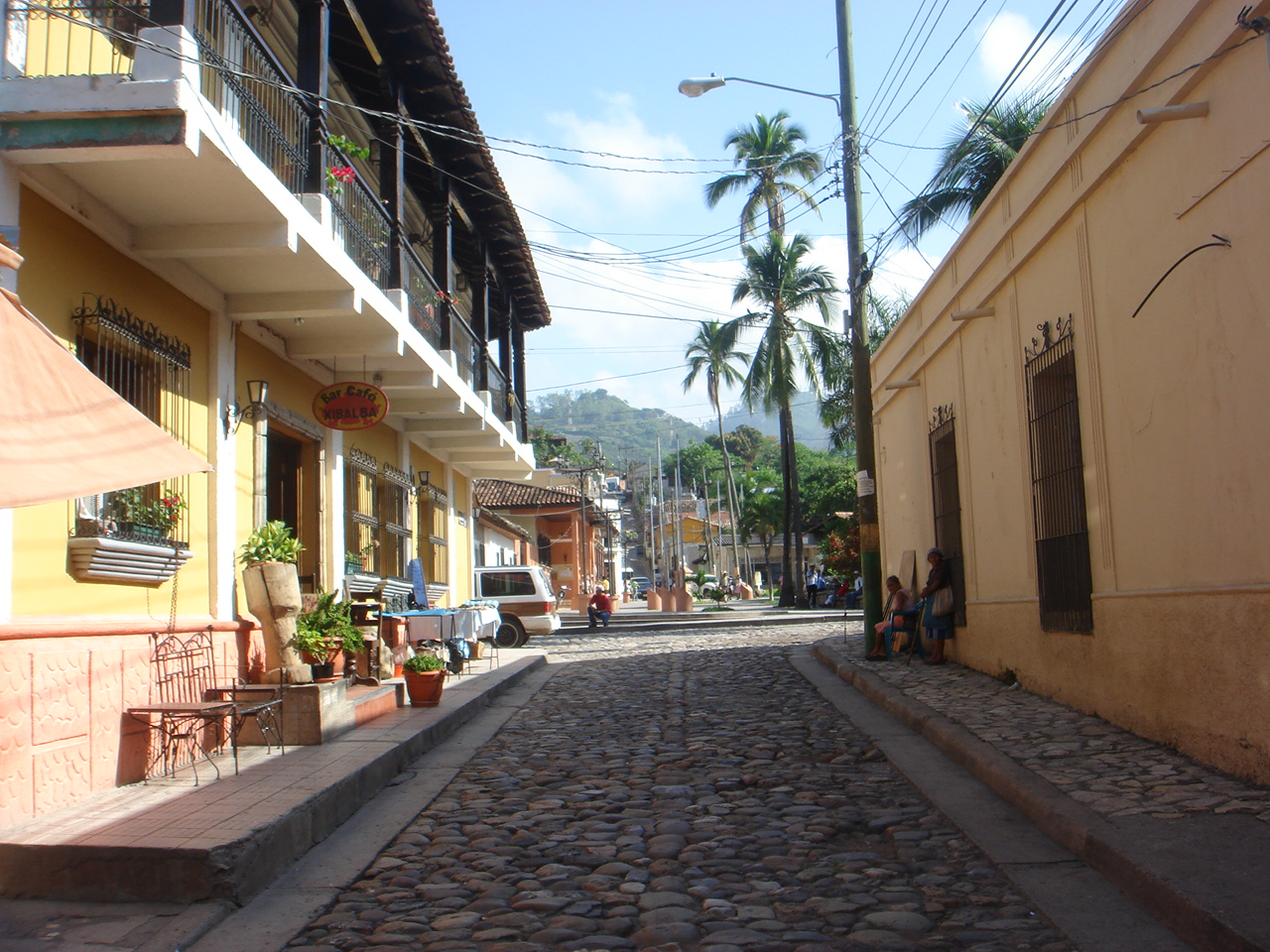 |
Oh, one last amusing story for the moment: When I went out to look for a pharmacy I saw a ministry of health office at the end of our block. So I went there, hopeful, but not expecting much. It was overcrowded and there was little direction by signs, but one woman kept watching me and I assumed she must have some idea what was going on. So I approached her and in Spanish asked her where a pharmacy was (which I later learned, when asking a soldier in the square, that I was mispronouncing). She pointed across the room to a clinic and there was a big line, which I didn't feel comfortable breaking, so I stayed and tried to explain my predicament: my sister is sick – upset stomach – what can I give her? I finally asked if she understood English and she nodded yes, so I started explaining in English. It was when I asked do you know who I should talk to, or do you have a suggestion, and she kept smiling and nodding, but for a brief instant looked away – that's when I realized how wrong I had been. She had no idea what was going on – she was just curious about the gringo. Further, she spoke no English and I wonder if she even spoke Spanish (it is possible in this area). But she was being as polite (and unhelpful) as she could. I almost asked, "You don't understand a word I'm saying, do you?" but instead just turned and left the next time she glanced away.
(evening)
We really have done very little today. C got better, but not by much, and we spent most of the day in the room. It was late afternoon when the room was sweltering (it faced north and into the sun) that C decided to pay extra herself and get us a better room. So we moved a few blocks down to an air-con room with TV for $43. Unfortunately, the manager/owner of the 1st hotel was being rather bitchy and wouldn't give a refund. I hadn't expected much, but I'd hoped. So we're just taking the loss and hopefully we'll both be well enough to visit the ruins tomorrow (though I couldn't eat more than half my dinner, I feel find now). We'll see if we stay here another night or not by how C does in the morning (we also found a pharmacy where she got dramanyl pills...)
At the pharmacy I was able to follow the conversation fairly well while C communicated with the ladies there to get some help finding some medicine for her to take (not having the emergency antibiotic I did – and not knowing if it was necessary at that point anyway -- her recovery was significantly slowed compared to mine; more on that later). Anyway, at one point in the conversation they ask her something I don't understand and she insists "no" to them a couple of times, but the ask again, eyeing me. She looks at me and says in English,
"They want to know if I'm pregnant."
Pregnant, I think, with a rather pregnant pause, then I look at them and I say,
"¡No, no es posible!" ("No, that's not possible!")
Then Cristine nearly yells,
"¡Él es mi hermano!" ("He's my brother!")
to which they quickly respond,
Tuesday, June 19, 2007 (Copán Ruinas, Hond.)
 |
 |
| ...C and I continue to recover, though C slowly (and I not completely, it seems). We went to the Archaeology Museum, which C didn't last long in due to sickness, but I spent about an hour and it was interesting. Learning about the Copán dynasty and the Mayan calendar were the best. The calendar follows a 52-year cycle composed of an integrated sequence of 260-day and 365-day years, or so the best I can figure. |
| Think of it like this:
each year cycle is like a wheel interlocking with the other to form a unique combination for each day within the 52-years it takes to fully complete both cycles congruently. So you can tell what year you're in on both calendars by the combination of dates from each calendar for any given day. This helps explain the 5200 year world cycle, in intervals of 20. That's 5 sets of 20 wheel-set cycles (all months in the Mayan calendar are 20 days long). The end of this one apparently comes December 23 of 2012. |
 |
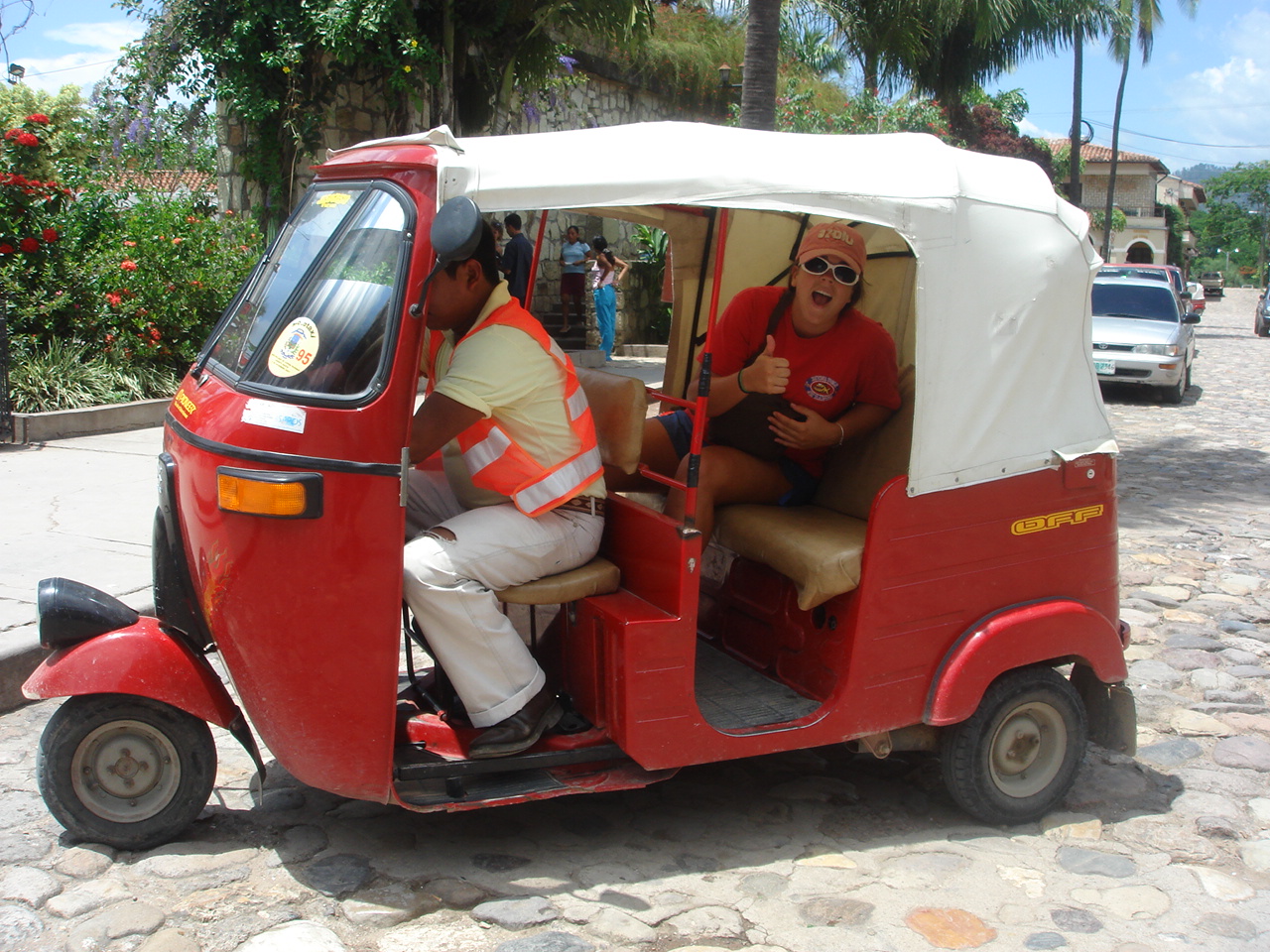 |
We then took the morning off and switched to a cheaper, but still fairly comfortable, room around noon. After a very light lunch we took a taxi (one of the many tuk-tuks – a red 3-wheeled car with the engine of a powerful golf cart and a white canvas-plastic roof) to the Principal Group ruins. |
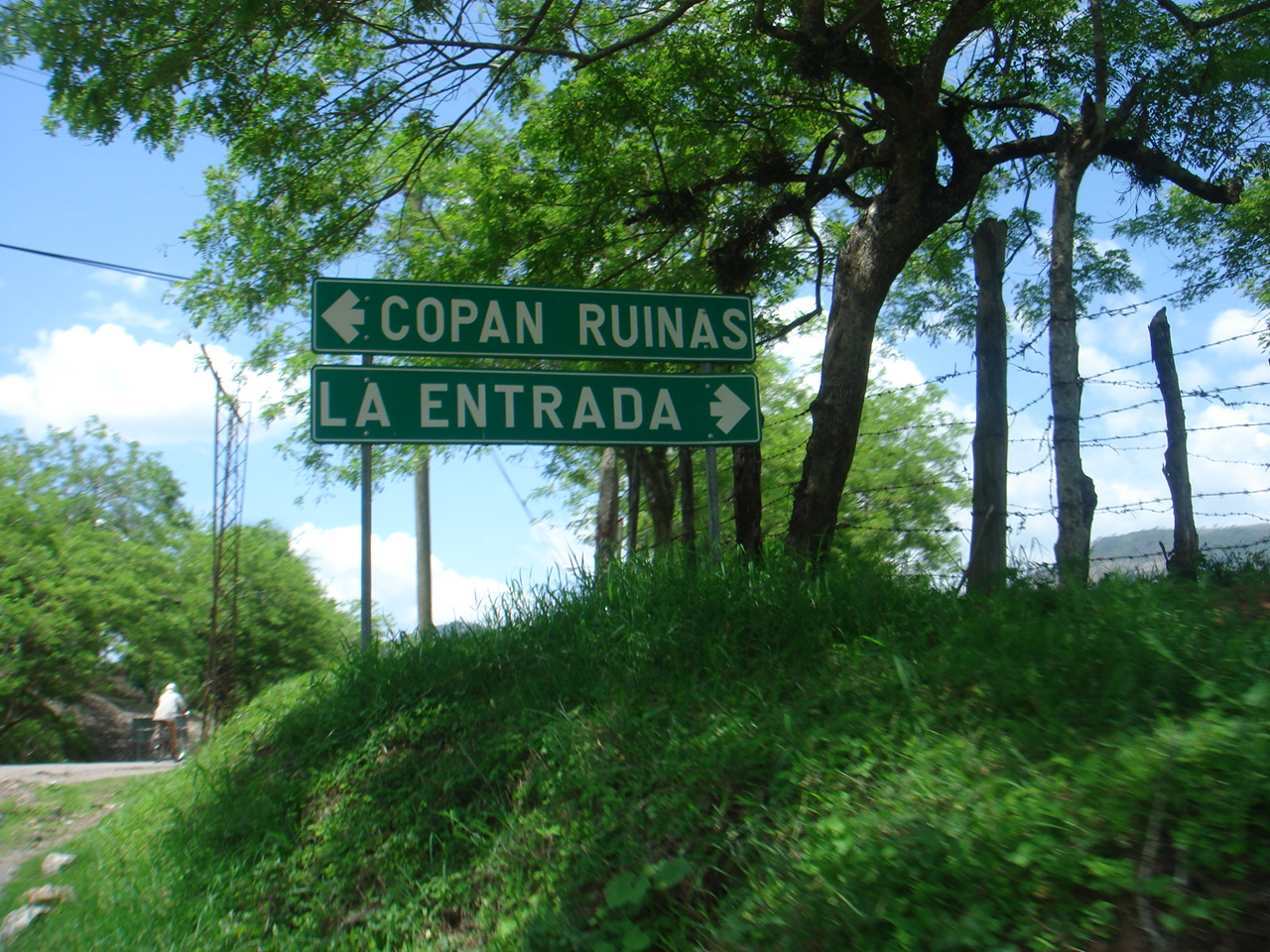 |
 |
As we entered the site there was a refreshment stand with a boy and a parrot. He offered to let us hold the parrot and get a picture with it, which we accepted. He took my walking stick (which I'd picked up on the side of the road in Suchitoto), got the bird on it, and then handed it over to us. Quite a treat! |
 |
The bird's name is Rosalila |
| The entire Copán archaological site was amazing! I wish I'd had more energy, as I think it would have come to life even more. As we approached, a part of me wondered if it was an elaborate hoax. But in your face it's all so real! Some parts of the ruins really are nothing more than rubble piles of stones, only barely resembling an actual pyramid or tower or mound, much less steps. In fact, some of these reminded me of piles of rocks in the woods I've seen back home (evidence of earlier civilization, too?). But still others, though worn with time, were clearly constructed pyramids and towers and stairs. Some sections were a shadow of their former selves, disturbed by earthquakes (I suppose), tree growth, and perhaps other elements. Yet many parts remained fine, at least the foundations, and especially around the central plaza.
These next three pictures are from the main courtyard area. |
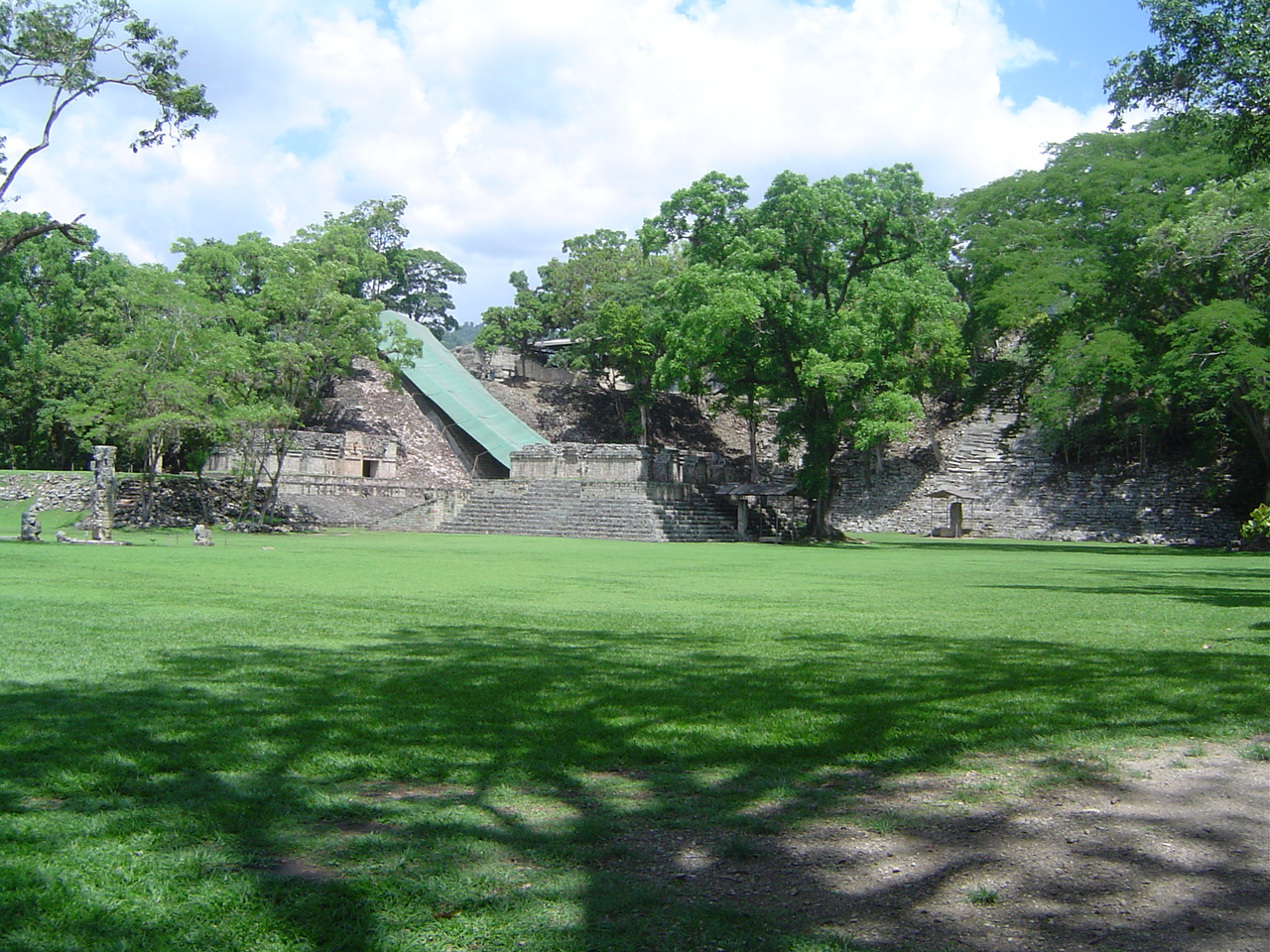 |
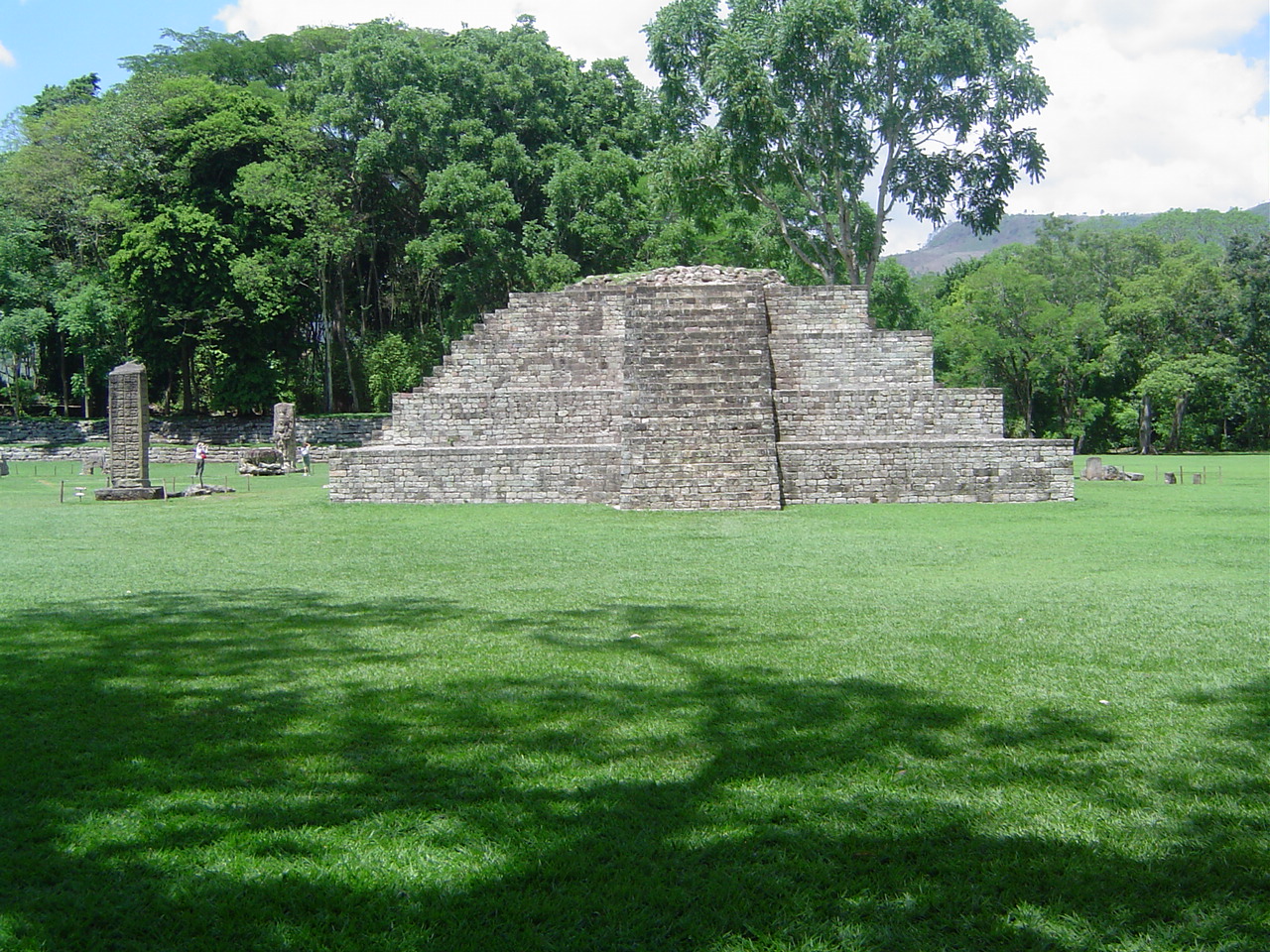 |
 |
The steps are so tall and steep. Climbing them I wondered how anyone, even with regularity, could do it with grace and aplomb, much less ease, especially when decending.
 |
Further, so much of the stonework is carved, inscribed, or decorated. It wasn't enough, apparently, to simply build a structure; it had to be intricately adorned as well. What labor! But what skill, too. The booklet we bought said if Tikal was New York, Copán was Paris. I suppose that is a point. The artistic boom that occurred here is astounding. |
 |
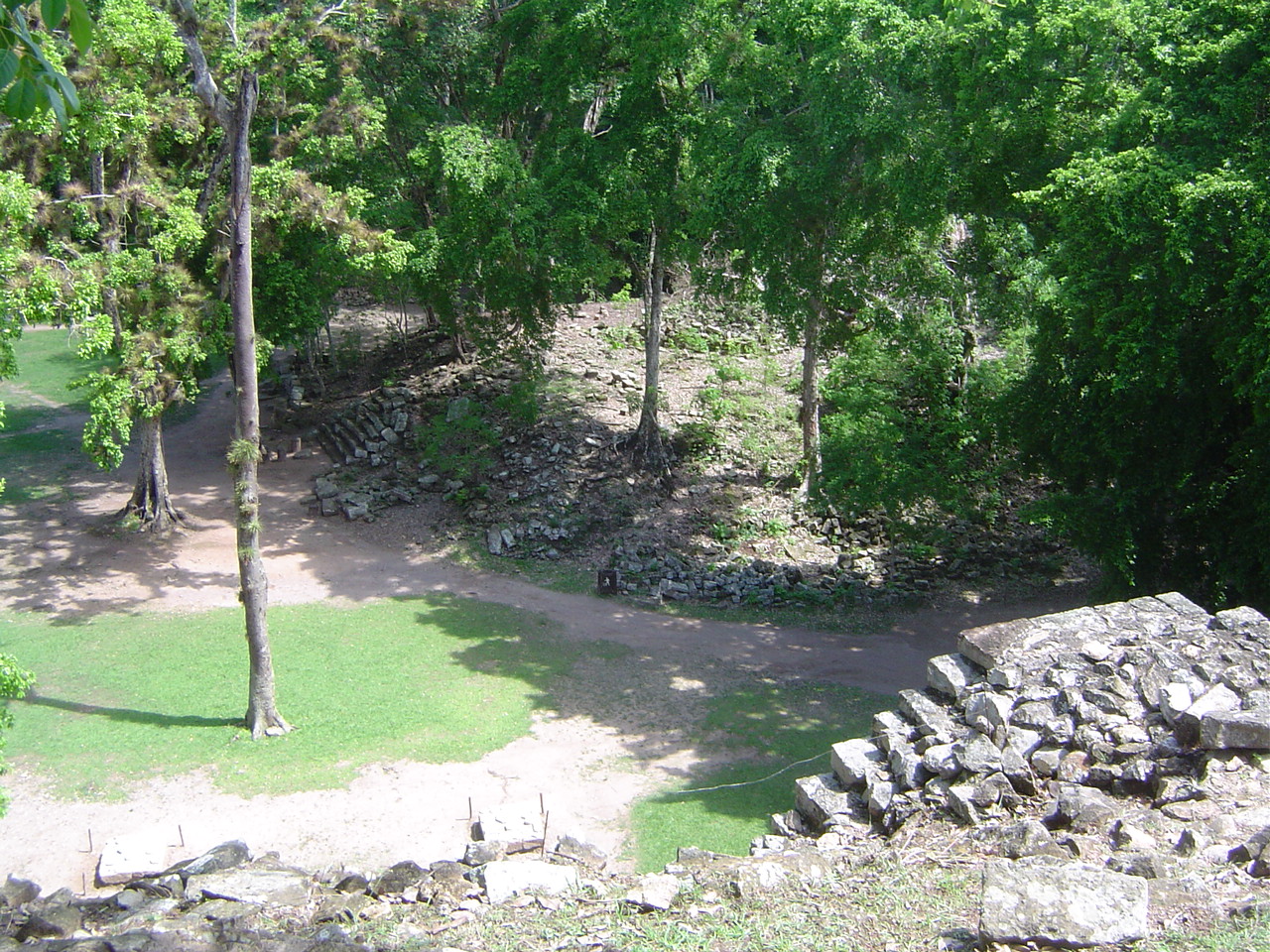 |
Lastly, the size just of the main compound is also astounding. It covered at least a full square kilometer, I'm sure, and possibly more. And that doesn't include La Sepultura, which we'll see tomorrow morning before leaving, or the likely less stable (ie, not stone) structures that would have housed people throughout the surrounding valley. The numbers I've read vary, but all indicate that at its peak, Copán thrived with over 20,000 people in its residential area (I don't think that's just the city proper, but I'm unsure – if it is, it means a super high population density). |
| The Mayans of Copán did pick a beautiful area. Cool at night, a little warm in the day (but not too hot), and awesome views of the surrounding mountains. It would have been (or would be?) very interesting to live there then. |
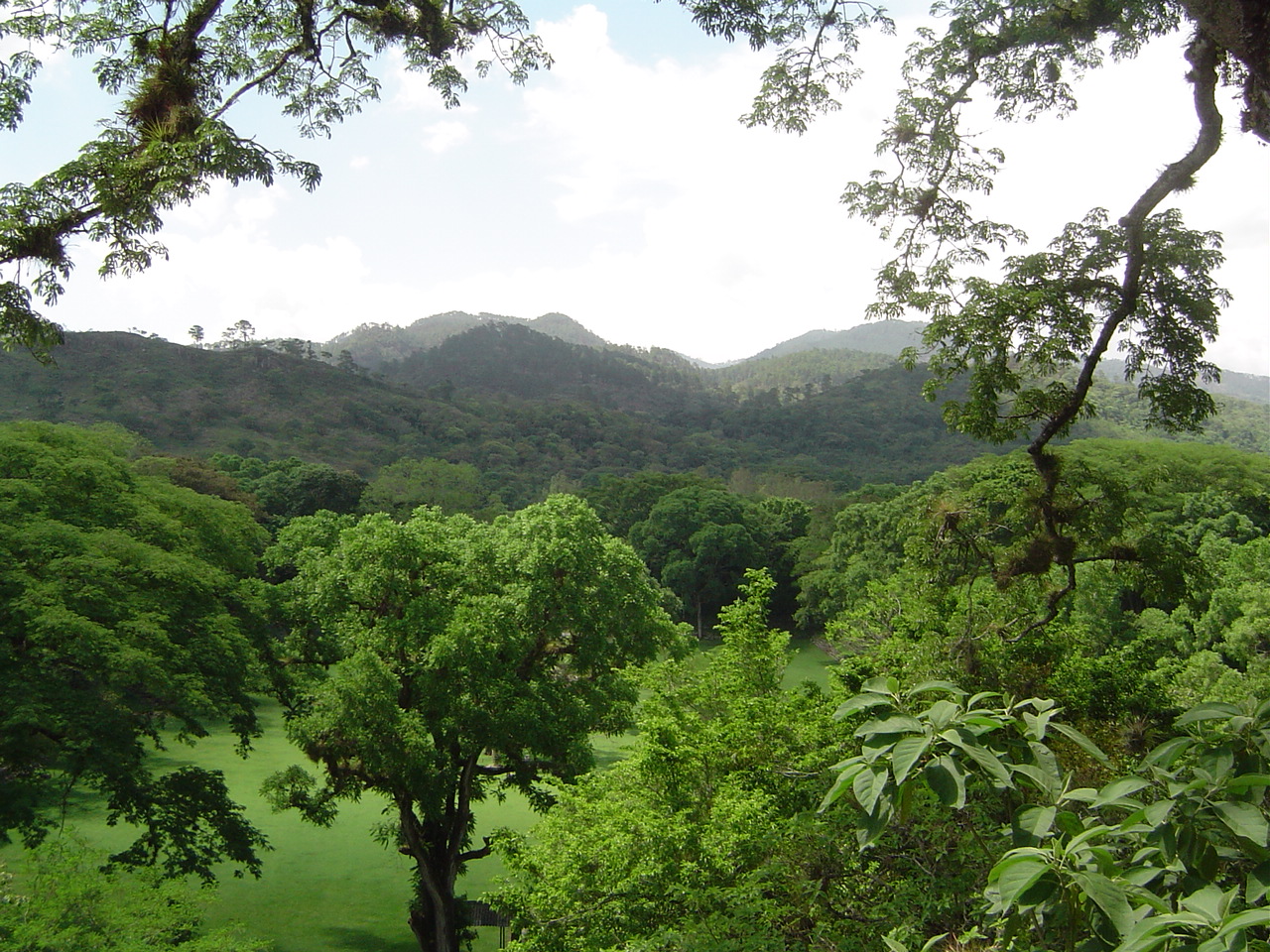 |
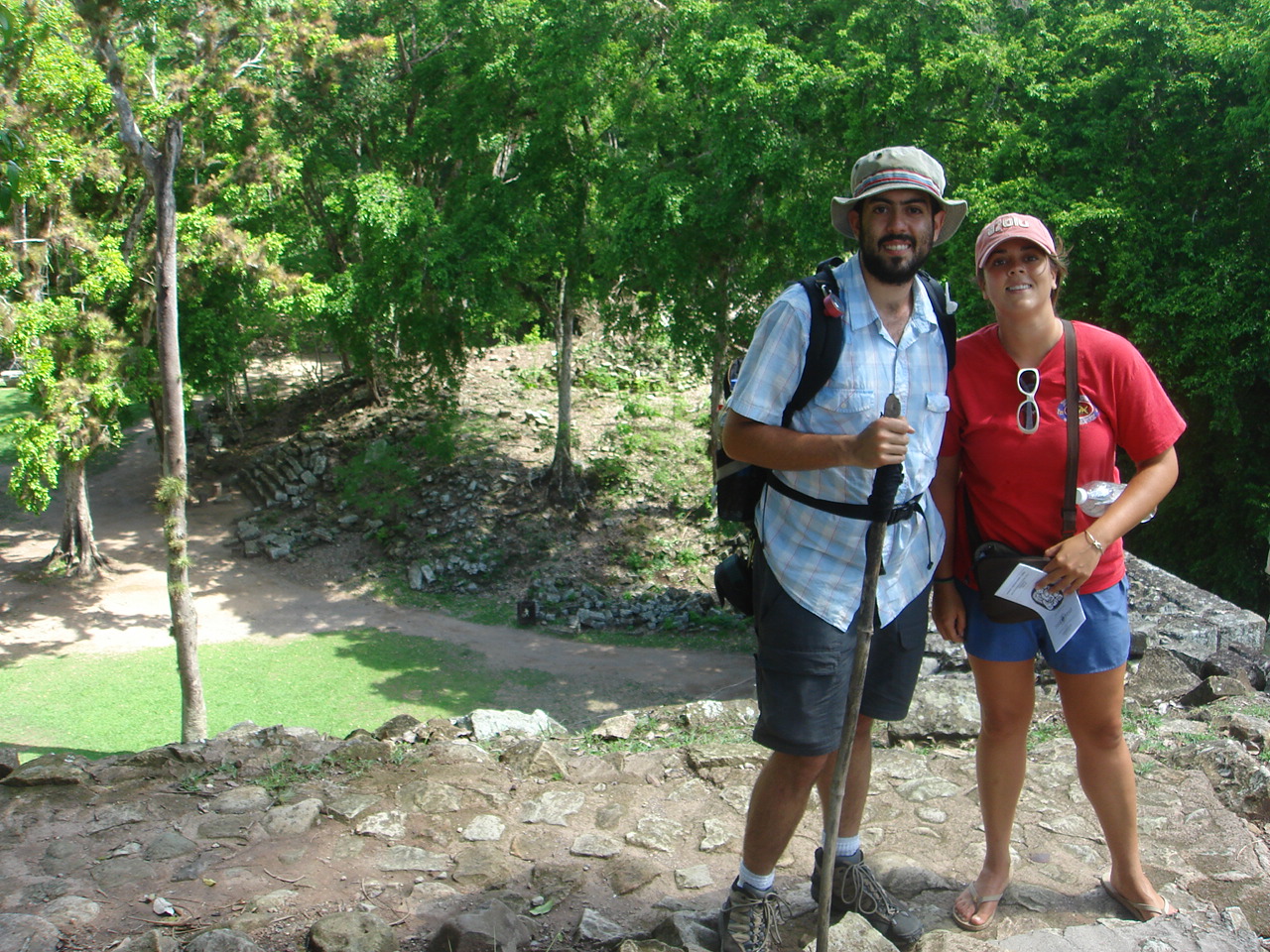 |
Oh, so you may be curious to know how the Mayan city of Copán collapsed. It is an interesting story, one that we do know something about. I said that at its peak, Copán had somewhere in the ballpark of 20,000+ people. At some point it then hit a very sudden population surge, bigger and faster than could be handled by the city's infrastructure. This increase in people created two shortages: food and housing. As people moved into areas further outside of the city (since the city had no room for them) the available arable land was not being used for crops anymore (but housing), which further intensified the food shortage. The expectable resulted: massive famine, poverty, and disease as living conditions plummeted and people died. Those who could began to move away. |
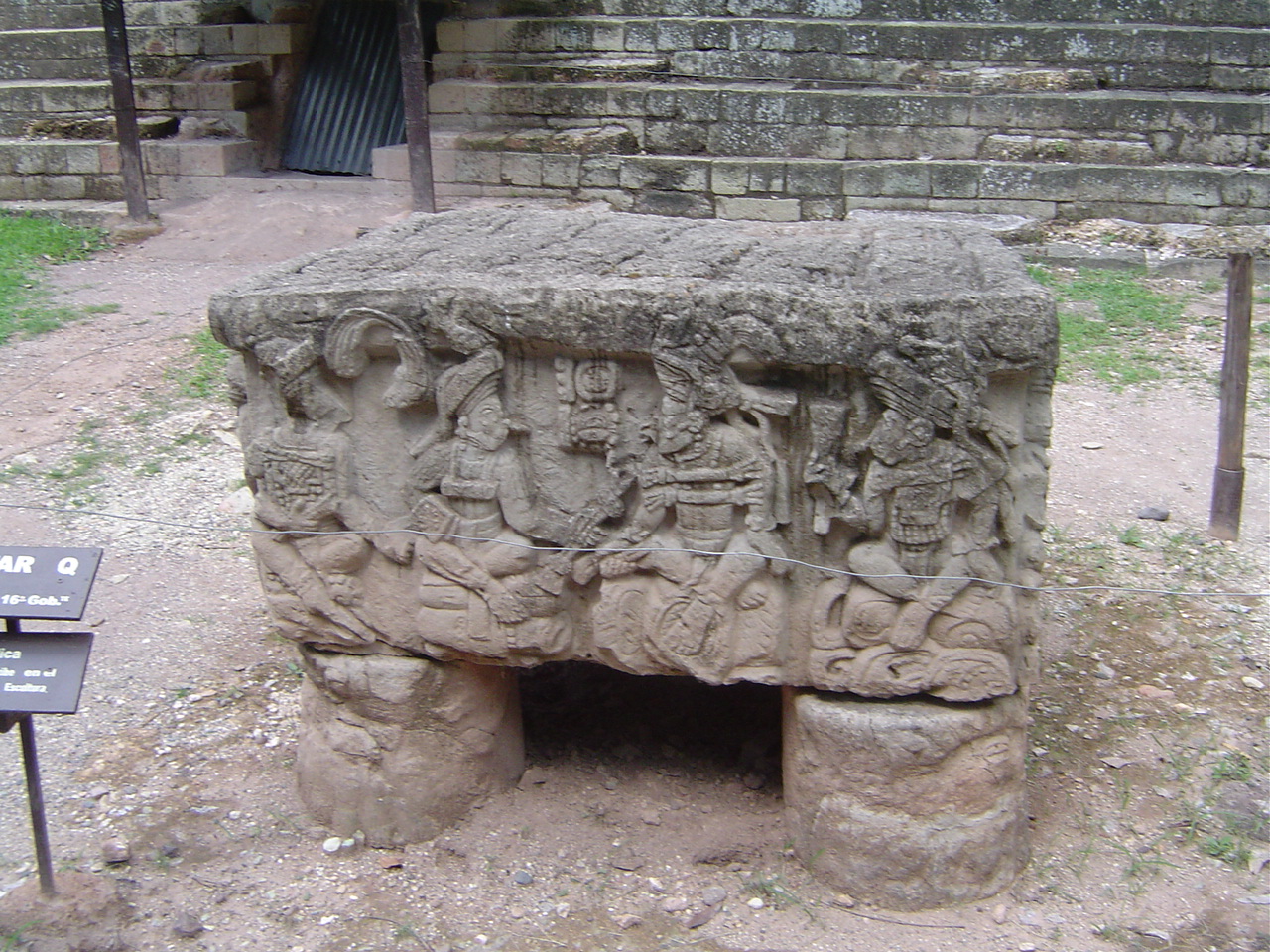 |
It didn't happen all at once, of course, but most estimates say that within the next two centuries or so, everyone had left, even the last few farmers trying to hang on. Well, they left – or died. |
|
Top pic: Me and Cristine on top of the Temple of Inscriptions.
Bottom pic: The less-than-expected Altar Q. |
Wednesday, June 10, 2007 (Copán Ruinas, Hond.)
| We went to Las Sepulturas this morning, the primary residential zone of Copán. While there I realized this was much like being in the suburbs. The whole area was maybe a 1/3 to ½ the size of the principal group (metro center?) and about 1 ½ to 2 km away. It was originally connected by a causeway, paved, I think, which has long since deteriorated. |
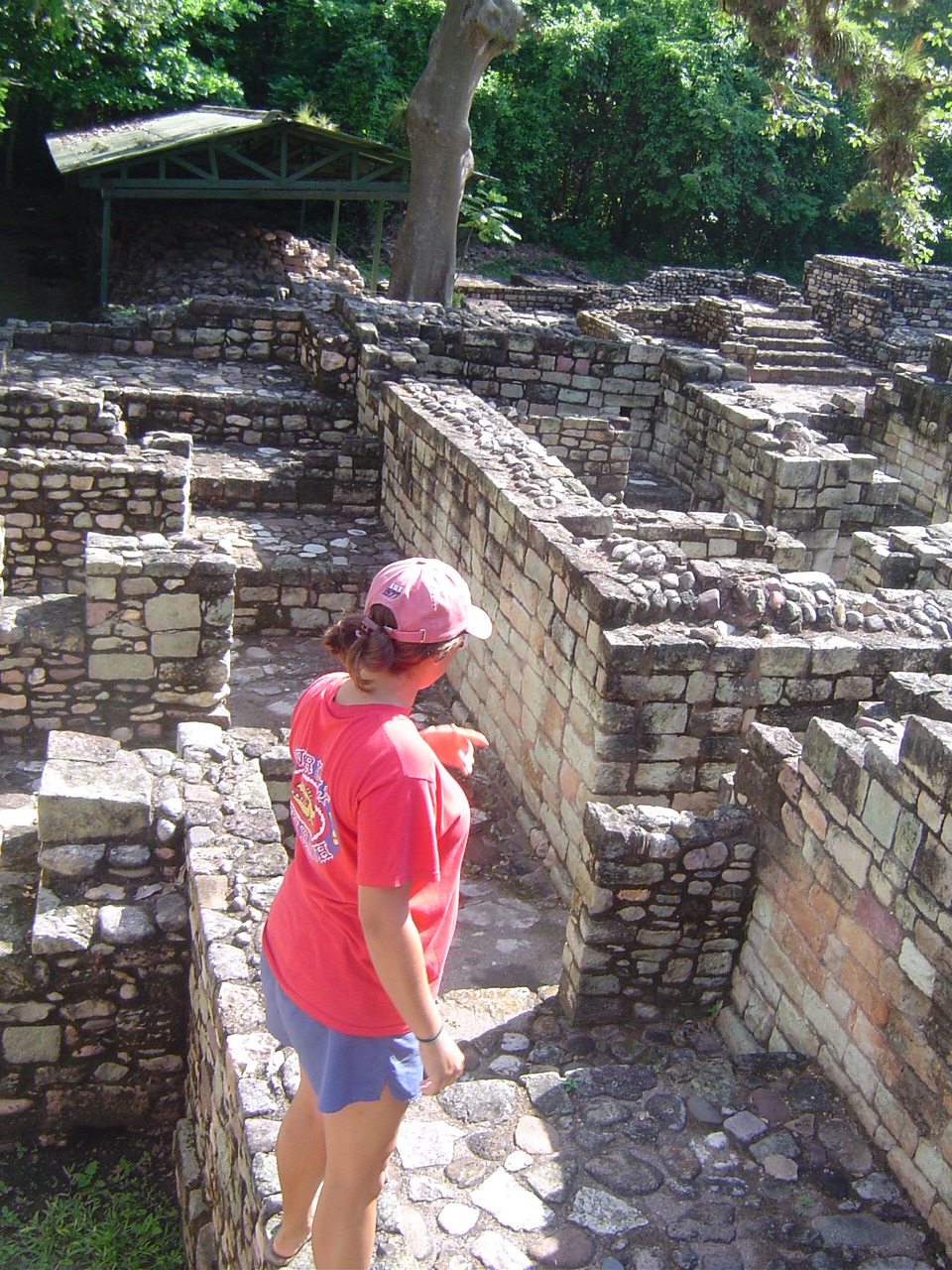 |
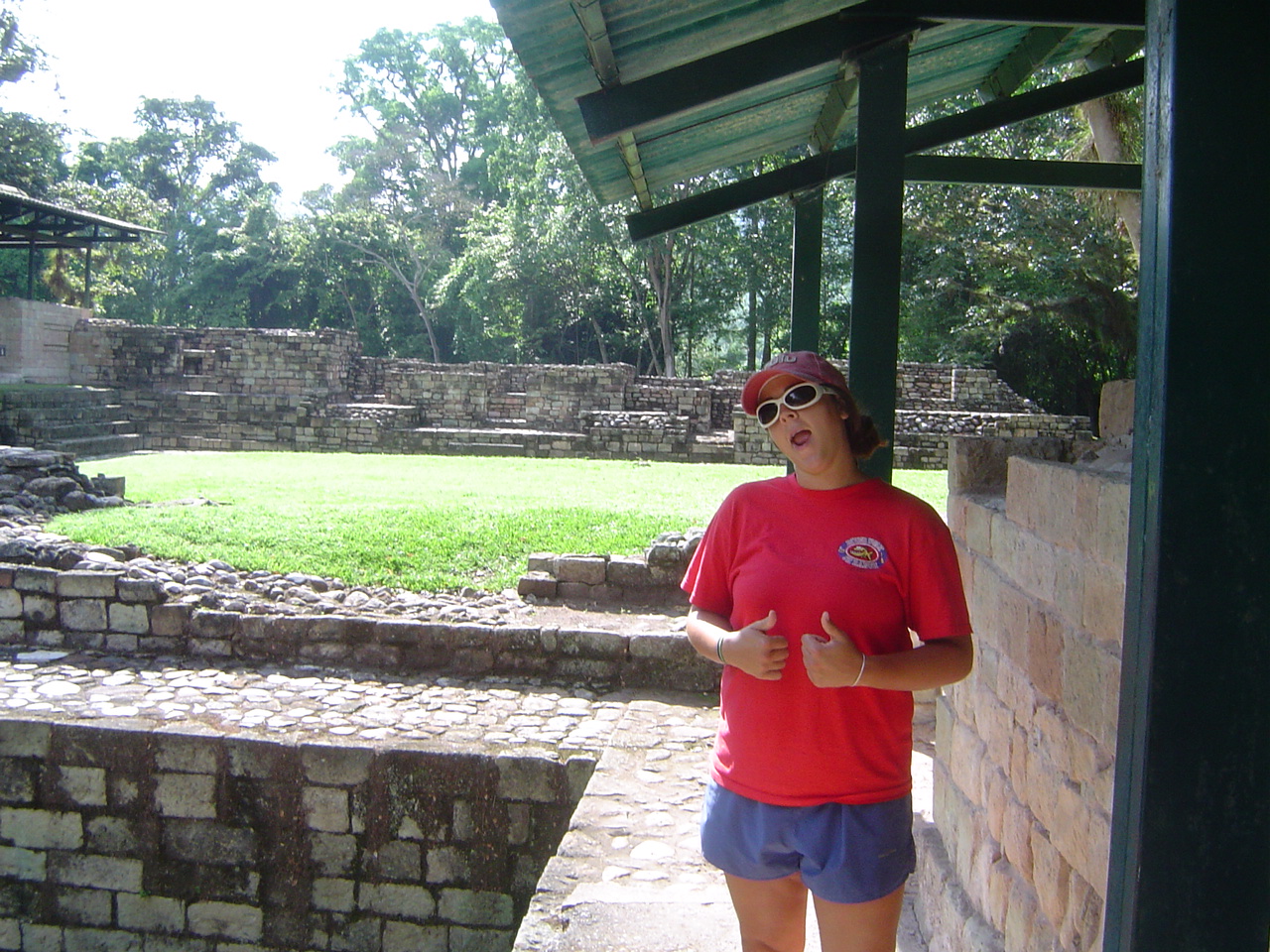 |
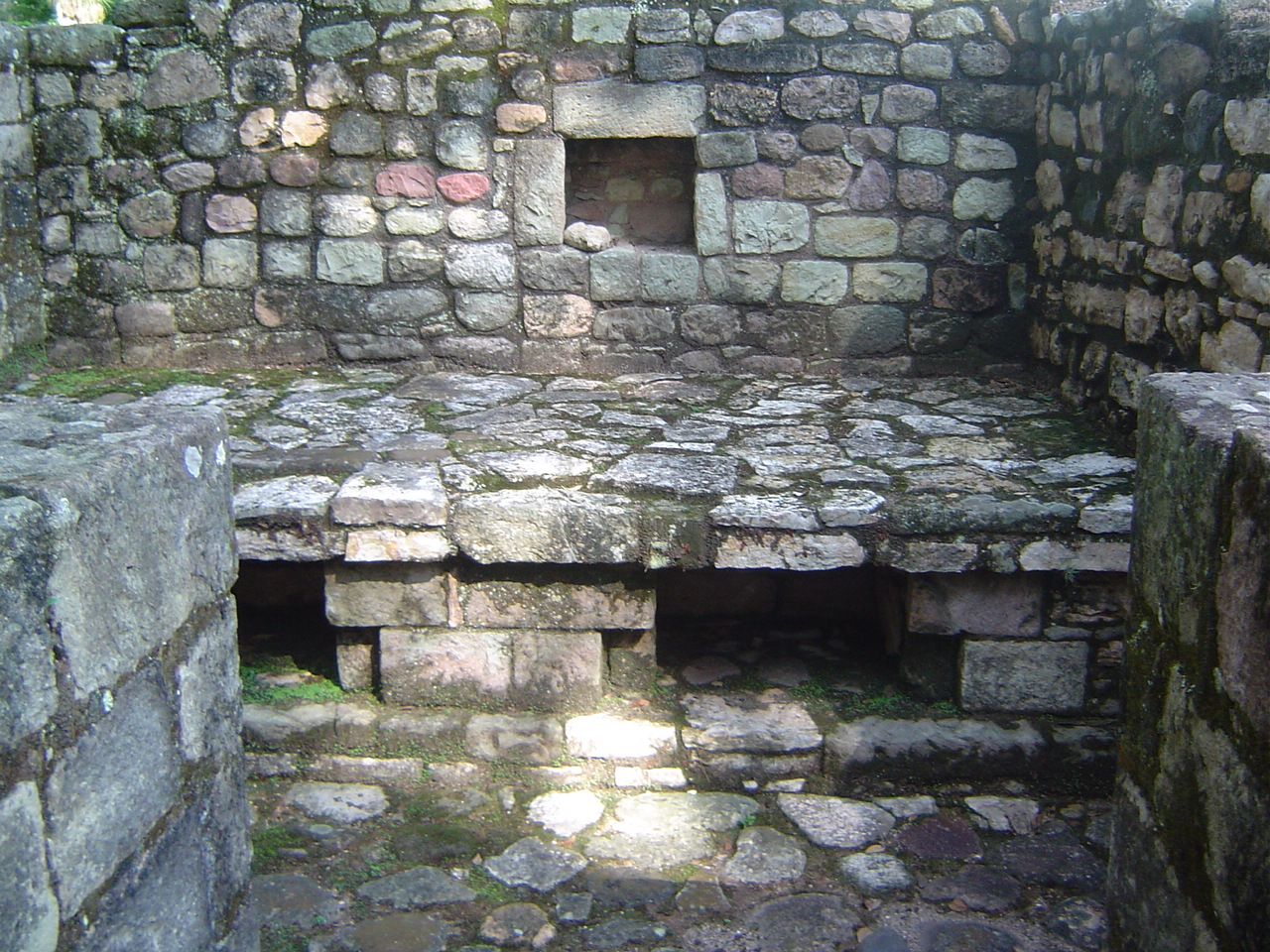 |
You could see to some degree the class differences in living spaces, though I'm not sure I could quite pull apart the four different classes that were supposed to have existed. I know I got three, maybe four knowing it should be there, but I could be judging one incorrectly. |
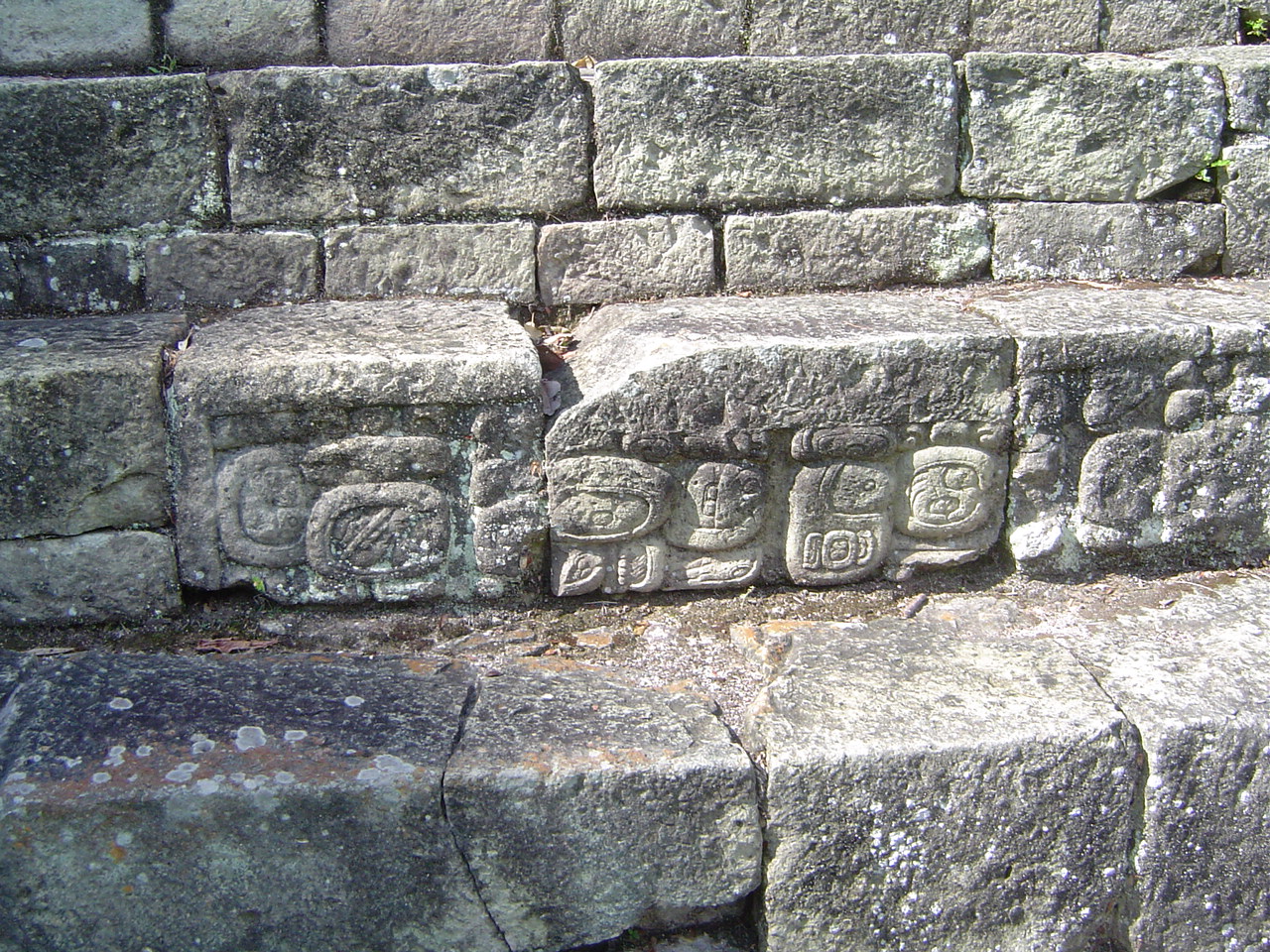 |
More of the intricate carvings representative of what was all over the place, on nearly every surface, wall and stair alike. |
Before long after all of this it was time to catch our shuttle out of here and do the next border crossing shin-dig into Guatemala.
Return to the starting page.








